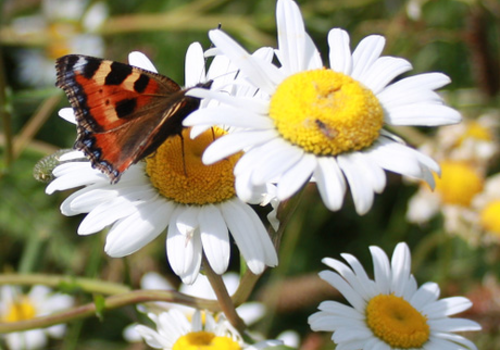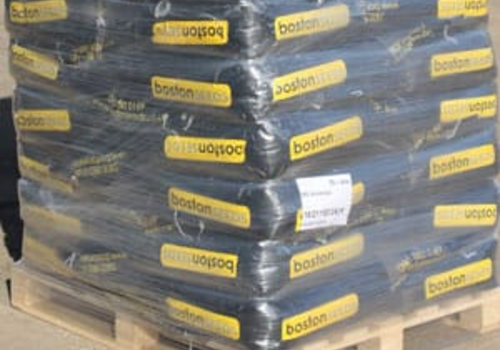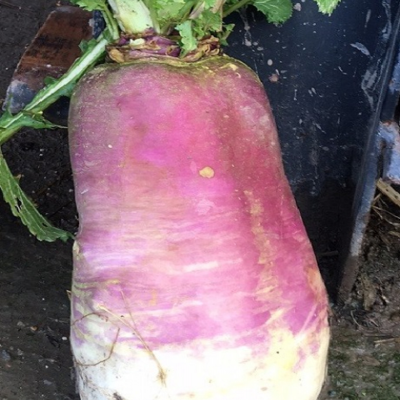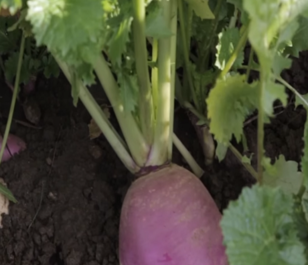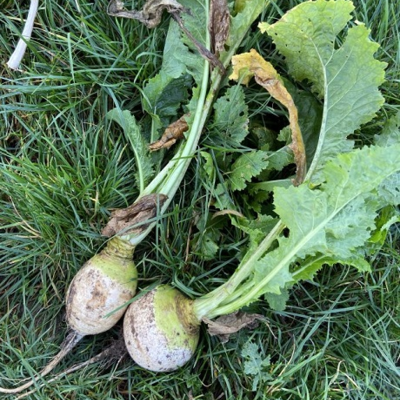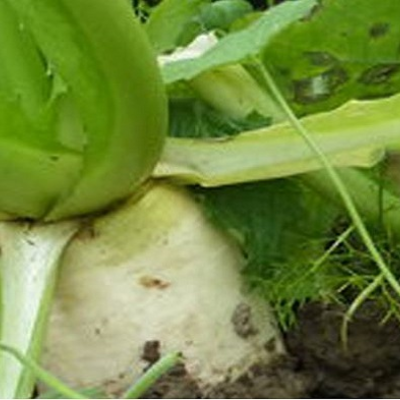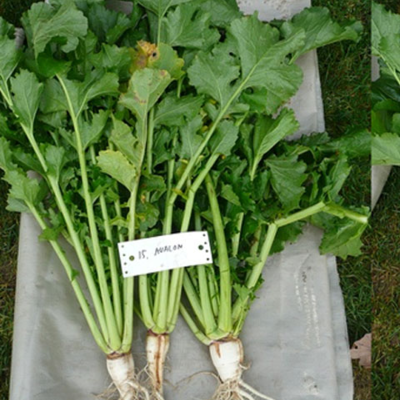Stubble Turnips
Stubble turnips are an extremely effective, short-term forage catch crop. Stubble turnips grow very fast and provide high-protein, palatable autumn forage when drilled after harvest of winter cereals.
Stubble turnip is small seeded with a low sowing rate, making for very economical forage production for livestock that can be utilised within 12 weeks of sowing. Our range of stubble turnip varieties are grown and harvested in the UK, and cleaned to high standards of purity and germination.
Don't hesitate to get in touch to speak to one of our experts or request a catalogue to view our full range. Ordering regularly or looking for large volumes? Click here to apply for a trade account today - we review all applications within one working day.
A large-leafed, highly-digestible variety. Good early vigour and good disease resistance
- Palatable throughout the season.
- Noted for high-yield, speed of growth and bolting resistance.
- Tetraploid variety, Bulbing type root.
- Sowing rate: 2kg/acre (drilled) or 3kg/acre (broadcast)
Samson can produce giant, tankard-shaped purple roots and shows consistently high intake and weight gain in replicated trials. Samson Stubble Turnips offer vital autumn or winter forage when sown in the summer or after harvest.
- Palatable to both sheep and cattle
- Ideal for finishing lambs and feeding to cows
- Tetraploid variety, tried and trusted on UK farms
- Suitable for grazing or lifting
- Sowing rate: 2kg/acre (drilled) or 3kg/acre (broadcast)
Rondo Stubble Turnip green skinned root with excellent anchorage which helps reduce wastage in the field, Rondo is also suitable for sheep or cattle.
- Leafy growth habitat
- Disease resistance
- Utilized from September to early February
- Sowing rate: 2kg/acre (drilled) or 3kg/acre (broadcast).
An early maturing tetraploid variety, with well-developed roots for sowing in July and August. Bred and produced by DSV.
- Feed from October to December
- A highly palatable variety has a leaf to root ratio of 50:50
- Excellent resistance to bolting, club root and alternaria
- Sowing rate: 2kg/acre (drilled) or 3kg/acre (broadcast)
AVALON is a very late flowering product which has a very high dry matter yield and is the best on the Dutch variety list and has excellent resistance to Alternaria
- Leafy turnips come into production early, due to very early vigour
- Can sown in either the spring or autumn
- As a cover crop they are an interesting alternative due to their winter hardiness, notably when sown late
- As a forage crop, Avalon can be grazed 4-6 weeks after sowing
- Sowing rate: 2kg/acre (drilled) or 3kg/acre (broadcast).
This item is currently unavailable
Stubble turnips can be grazed in as little as 12 weeks from sowing, but are ideally left longer in order to enable the bulbs to develop further. Strip grazing is preferable to avoid selective grazing of the leafy top in favour of the tougher, but protein-rich bulb.
Stubble turnip seed costs as little as c.£5 per acre, and is therefore an extremely economical source of high-quality and high-volume forage - yields of around 2t of dry matter per acre are common.
The growth habit of stubble turnip can be influenced by different seed rates, depending on whether top growth or bulb growth is more desirable. Top growth is encouraged by higher seed rates and bulb growth is encouraged by lower seed rates.
Types of Stubble Turnips
There are two main types of stubble turnip: bulbing and non-bulbing/leafy.
- Bulbing
For example, Barkant and Vollenda.
This type of stubble turnips will produce large, tankard-shaped bulbs which grow out of the ground, and are easier to consume. However, bulbing-type stubble turnips tend to be of lower dry matter.
- Non-bulbing/Leafy
For example, Tyfon and Jupiter.
Leafy stubble turnips have larger leaf mass than bulb so are better suited to summer and early autumn consumption. As comes with larger leaf growth, this type of stubble turnip have a higher protein content.
Sowing Period
Stubble turnips are sown from May through to mid-September, commonly after cereal harvest. They should be sown around 12-14 weeks before they are to be utilised. Ensure that they are sown by mid-August/early September at the latest to allow for full growth before consumption.
Crops sown in May can be grazed from mid-summer, whereas crops sown in July and August can be grazed from November onwards. Sowing early, around April, after rye or IRG, stubble turnips can be used for finishing off spring lambs.
Sowing Rate
The sowing rate of stubble turnips is dependent on the sowing method.
- Broadcasting: 5-6kg/ha (3kg/ac)
- Direct drill: 4-5kg/ha (2kg/ac) at 1-2cm deep
During dry conditions, or if disease/pest pressure is high, increase the sowing rate slightly. If you are looking to produce less leaf mass and create more space for larger bulbs, the sowing rate can be lowered.
Seedbed Preparation and Sowing
Stubble turnips perform best in lighter, free-draining soil types with an average pH of 6.5 – however, they are more tolerant of acidic soils than other brassicas.
If sowing stubble turnips after grass, ensure this is sprayed off with glyphosate to create a stale seedbed. Once this has been killed off, cultivate to create a fine tilth into which the seed can then be directly drilled.
When following cereals, the stubble should be lightly cultivated to break up the top layer of the soil for the seed to then be broadcast or direct drilled.
Whichever method is used for sowing, ensure the area is rolled after to allow for good seed-to-soil contact.
Fertiliser
An application of 80kg of nitrogen, 25kg phosphate and 25kg potash per ha will be sufficient. During the initial growth stages in the first 3-4 weeks after sowing, a top dressing of nitrogen will help. When stubble turnips are being sown after a cereal, 60-80kg of nitrogen will help bulb maturity.
The information above is given in good faith and is to be used as a guide only. For further advice, contact a FACTS qualified advisor.
Grazing and ongoing management
Sown in ideal conditions, stubble turnips can be grazed around 12-14 weeks after seeding – however, you may wish to leave it later into the season for more bulb maturity. Animals should be introduced to the crop gradually and between grazing whilst still having access to grass or grass silage. Ensure that animals still have an ad-lib supply of hay, silage or straw alongside stubble turnip grazing. It may take three weeks for stock to fully adjust to this new feed source.
If feeding to dairy cows, they should be fed stubble turnips straight after milking with them being removed at least three hours before the next milking.
To limit wastage, it is advisable to strip graze as this will avoid selective grazing of the rich leaf at the expense of the high-nutrient bulb. Particularly during the initial introduction to grazing, lambs can eat the green tops but not the bulbs, so training will be required regarding grazing pressure. Providing grazing is well managed, it can be budgeted for a utilisation rate of around 80%.
Companion Crops
Commonly, stubble turnips are sown on their own and will provide sufficient and valuable feed source during summer or autumn and winter. Alternatively, stubble turnips can be sown alongside forage rape, kale or an alternative hybrid brassica to enrich the feed source.
Yield and Feed Quality
Stubble turnips provide a good value for money feed source whilst providing a nutrient-rich diet for both cattle and sheep.
Feeding quality may differ depending on soil type, bulb type and variety, but the below can be used as an approximate guide:
|
Average Dry Matter Yield |
3.5-4.5t/ha |
|
Average Fresh Yield |
40-50t/ha |
|
Crude Protein |
17-18% (this is mainly from leaves) |
|
Digestibility Value |
68-70% |
|
Dry Matter |
8-9% |
|
Metabolisable Energy |
11MJ/kg DM |
|
Sugars in DM |
55% |
Feeding Intake
Daily consumption will depend on external influences such as livestock numbers and bulb type, however, approximately, dairy cows will consume 22kg in a 2-3 hour grazing window with a ewe eating half this amount during one day.
On average, an autumn crop of 40t/ha (allowing for wastage) should provide enough grazing for 500 cows or 1,000 ewes during one day.
Stubble turnips are popularly sown as a standalone crop, but are also found in forage crop mixtures and other products. Boston Seeds supplies a full range of forage crops for UK agriculture, including fodder beet, forage mixtures, kale and hybrids and arable silage mixtures. Browse online or get in touch to speak to one of our expert advisers.
Buy With Confidence

